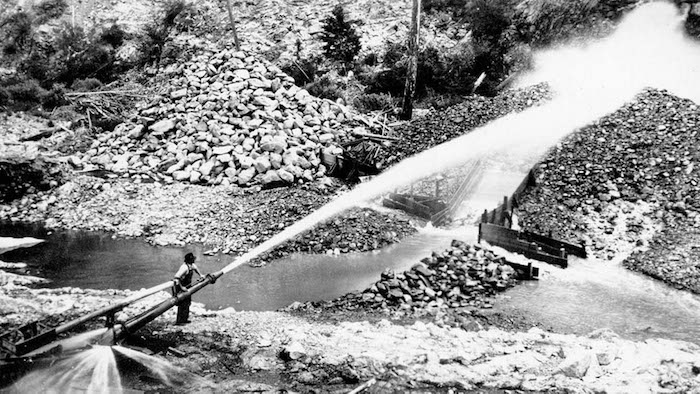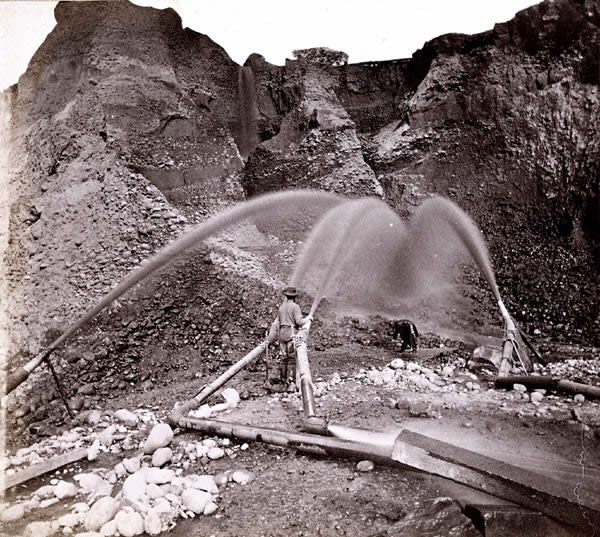
Hydraulic mining was used extensively during the early years of the California Gold Rush and is still done to a lesser extent even today.
Within the first few years of the initial discovery of gold at Sutter’s Mill, most of gold placers that were easy to workable were already claimed. There were still many areas that held good gold, but required much work to extract than one man could ever do.
Large mining companies saw the potential for profit if they could find a way to process large quantities of gold bearing gravel in quick order. The process called hydraulic mining, or “hydraulicking” became widely used.
Hydraulic mining uses high pressure jets of water to dislodge sediment and material for processing. The process is relatively simple; water is rerouted from a source (stream, river, reservoir, etc.) and run through a canvas hose, and through a high pressure jet called a monitor. The monitor is anchored in place and can be aimed in different locations.
The water coming out of the monitor is under extremely high pressure, and when aimed at a hillside it will dislodge the material. At this point the gravels are processed in a similar fashion to other mining methods, the slurry of water and gold bearing material is washed through a sluice box to extract the gold.

Miners literally washed away mountains at these big hydraulic mining operations.
Although hydraulic mining is an extremely efficient mining method, there are many downfalls to its use. It is still used under certain circumstances and in many 3rd world countries, but most modern countries have banned its use for gold extraction.
The environmental costs are high, specifically due to the erosion issues that it causes. Not long after the method was first used in California, heavy silt discharges began occurring in the Sacramento Valley, causing extreme flooding over rich farm grounds. This caused conflict between farmers and mining companies.
The large hydraulic mines in California ceased operation in 1884. Throughout the West hydraulic mining was still used in some places mostly on a smaller scale, where it continued to be a method that helped to produce million in gold.
Next: You Can Still Find Gold at Old Hydraulic Mines
Next: Best Metal Detectors for Small Gold
